ASPHYXIA
Medicolegal view
The correct representation according to the given guidelines is:
ASPHYXIA
Medicolegal view
Definition of Asphyxia
Decrease or lack of Oxygen supply to the blood and tissues below the normal level, and Hypercapnia where there is an increase in carbon dioxide retention in the blood and tissues, which affects tissue metabolism.
Pathophysiology Classification of Asphyxia
- 1. Anoxic anoxia
- 2. Stagnant anoxia
- 3. Anemic anoxia
- 4. Histotoxic anoxia
Anoxic Anoxia
This results from either:
- Prevention of oxygen entering the lungs or
- Inability of lungs to oxygenate the blood.
It includes:
A. Due to lack of available oxygen in the air for inspiration, e.g., at high altitude, staying near a fire.
B. Due to inspiration of an inert gas like methane, sewer gas, etc.
C. Due to interference with respiration by any mechanical obstruction in the air passage, e.g., smothering, hanging, strangulation, choking, etc.
D. Due to low oxygen content in the anesthetic mixture of gases.
E. Due to interference with respiratory movements or function, as seen in traumatic asphyxia, penetrating chest injury, paralysis of respiratory muscles, etc.
F. Due to congenital defects of the heart or lung or blood vessels.
Histotoxic Anoxia
In this condition, there is interference with tissue oxygenation. Here, cells are not in a position to utilize the oxygen.
Stagnant Anoxia
This is a condition where there is slowing down of circulation with impaired oxygen delivery to tissues. This may be seen in:
A. Congestive cardiac failure
B. Peripheral circulatory failure/shock
C. Acute corrosive/irritant poisoning
D. Heat stroke
Anemic Anoxia
It indicates reduced oxygen-carrying capacity of blood. Here, there is oxygenation of blood in the lungs, but blood has reduced capacity to transfer the oxygen to tissues. It may be seen in:
A. Anemia
B. Carbon monoxide poisoning
C. Hemorrhage
D. Formation of stable components of hemoglobin like sulphemoglobin, methemoglobin, etc.
Causative Classification of Asphyxia
- Mechanical asphyxia
- Traumatic asphyxia
- Environmental asphyxia
- Toxic asphyxia
- Pathological asphyxia
Classical Signs of Asphyxia
- Cyanosis (1)
- Congestion of organs (2)
- Petechial hemorrhages (3)
- Pulmonary edema (4)
- Fluidity of blood (5)
- Dilatation of the right chamber of the heart (6)
Classical Signs of Asphyxia (Continued)
- Difficulty and/or noisy breathing, which may ultimately lead to cessation.
- Rapid pulse.
- High blood pressure (hypertension).
- Swollen veins on the head and neck.
- Convulsions.
- Paralysis.
- Slowly losing consciousness.
Cyanosis
Cyanosis is most commonly seen on the face, i.e., bluish discoloration of the face due to reduced oxygenated hemoglobin.

Petechial Hemorrhages
Petechial hemorrhages are pinpoint (1-2 mm) collections of blood in serosal and skin surfaces due to the rupture of small venules under pressure.

Mechanical Asphyxia (Violent Asphyxia)
Hanging Hanging is a form of violent death produced by suspending the body with a ligature round the neck, the constricting force being the weight of the body or a part of the body’s weight.
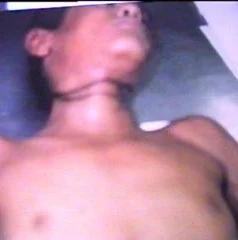
Types of Hanging
I. On the Basis of Knot Position
-
Typical Hanging: When the body is suspended by a ligature with a point of suspension at the center of the occiput, i.e., when the knot is at the nape of the neck.

-
Atypical Hanging: In this type of hanging, the point of suspension is not at the occiput, i.e., the knot is not at the nape of the neck. Thus, when the knot in hanging is at other than the nape of the neck.
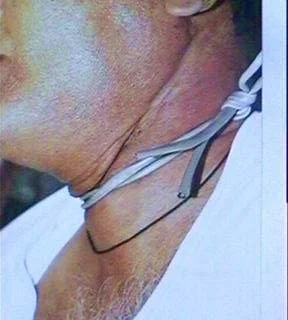
II. On the Basis of Degree of Suspension
- Complete
- Partial
III. On the Basis of Manner of Death
- Suicidal
- Accidental
- Homicidal
- Judicial

IV. In Relation to Death
- Antemortem
- Postmortem
Mechanism of Hanging
In hanging, the constricting force may be:
- Weight of the entire body as in complete hanging, or
- Part of the body weight as in partial hanging.
-
A constriction pressure of 2 kg is sufficient to occlude the jugular venous system, causing cerebral venous congestion.
-
A constricting pressure of 5 kg can compress the carotid arteries, causing cessation of blood supply to the brain.
-
A constricting force of 15 kg can compress the trachea, causing obstruction to respiration.
-
A constricting force of 30 kg can obstruct the vertebral arteries.
-
Thus, it is not necessary that the body should be suspended by a ligature completely as in complete ‘hanging’. Even though the body is touching the ground as in partial hanging, the person may lead to death.
Cause of Death
Immediate Causes
- Asphyxia: Obstruction of the airway.
- Venous congestion: Obstruction of the jugular venous system.
- Cerebral anemia: Compression of carotid arteries causing cerebral ischemia.
- Vagal Inhibition: Vagus nerve or carotid bodies when compressed may cause vagal inhibition with cessation of the heart.
- Combination of asphyxia and venous congestion.
- Fracture dislocation of cervical vertebrae.
Cause of Death (Continued)
Delayed Causes
- Aspiration pneumonia.
- Infection and septicemia.
- Pulmonary edema.
- Hypoxic encephalopathy.
- Laryngeal edema.
- Abscess of brain/encephalitis.
Autopsy Findings
External Examination
A) Findings in the neck:
- Ligature mark is the most important finding in the neck.
- The Ligature used for hanging causes a mark over the neck. It is a pressure abrasion caused by the ligature.
- The mark is in the form of a furrow or groove in the tissue and is pale in color, which may turn yellowish-brown to dark brown later on.
- The mark may be accompanied by reddish abraded edges caused due to constriction. The mark is hard and parchment-like due to drying and desiccation of abraded skin.
- The ligature mark is usually situated above the thyroid cartilage and is running obliquely, passing backward and upwards on either side of the neck.
Autopsy Findings (Continued)
Internal Examination
A) Neck:
- The tissues underneath the mark are dry, white, and glistening with occasional ecchymoses in the adjacent muscles.
- Muscles of neck: may show contusion in some cases.
- Carotid arteries: May be injured by the ligature, whereby there is slight bleeding into their walls at the level of the ligature.
- Hyoid bone: Occasionally, the hyoid bone may be fractured and is more common in individuals above 40 years of age.
- Microscopic examination of the thyroid gland and salivary gland shows focal interstitial hemorrhages.
B) Brain: May be congested if there is compression of the jugular venous system. May be pale if there is compression of carotid and vertebral arteries.
C) Lungs: Lungs are congested and edematous with Tardieu spots over the pleura.
D) Abdominal viscera: Congested.
Other Types of Hanging
- Judicial Hanging is the way of legal execution of death.
- Lynching: It is a homicidal hanging.
- Autoerotic Hanging: Also called sexual asphyxia.
Lynching
Lynching is a form of homicidal hanging where an accused of murder or rape is hanged in a public square by a mob as a part of carrying out justice. The term “lynching” is derived from Charles Lynch (1736-96), who administered rough justice in Virginia. This was his system of punishment given to African-American (Negro) slaves for rape or murder, who were being lynched by an angry white mob.

Strangulation
- Definition: Strangulation is a form of violent asphyxial death caused by constricting the neck by means of a ligature or by any other means without suspending the body.
- In strangulation, the constriction force is other than the weight of the victim’s body. There is an application of external force, such as compression of the neck by a rope, by a belt, by a stick, etc.
Strangulation Deaths are Classified on the Basis of Means Used to Constrict the Neck
- Ligature strangulation.
- Manual strangulation or throttling.
- Mugging.
- Garroting.
- Palmar strangulation.
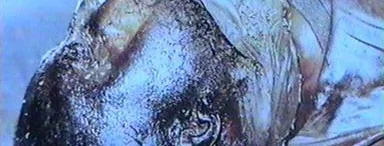

Depending on Manner of Death, Strangulation is Classified
- Homicidal strangulation.
- Accidental strangulation.
Cause of Death in Strangulation
- Asphyxia.
- Cerebral hypoxia.
- Cerebral congestion.
- Combined - asphyxia and venous congestion.
- Vagal inhibition.
- Fracture dislocation of cervical vertebrae.
Ligature may be in form of rope, belt, wire, cable etc
Autopsy Findings in Strangulation
External Examination
Findings in neck: The appearance of neck and findings produced may vary according to the means used ; rope, wire, cable etc. A) Ligature mark
- Appearance: Usually well defined and grooved; may be a single band or multiple bands if the ligature was twisted repeatedly.
- Location: Can occur at any level of the neck but is commonly found at or below the thyroid cartilage.
- Distribution: Typically completely encircles the neck transversely, and may be more prominent anteriorly and at the sides.
- Knot-related change: If a knot was present, there is often a wider area of contusion at the knot site.
- Obliquity: The mark may be oblique in certain situations — for example, in hanging where the body has been dragged after strangulation or when the victim was sitting and the assailant applied the ligature from behind, producing a backward-and-upward force.
EXTERNAL EXAMINATION (continued)
- Initially the ligature mark is pale with a reddish margin; later it becomes dry, dark, hard and parchment-like.
- Breadth of ligature affects the mark: a wide ligature produces a wider, more superficial impression; a narrow ligature (e.g., metal wire) produces a narrower, deeper impression.
- In some cases the mark is so deep it appears the neck was pierced by the ligature — the so-called “cheese‑cutter” phenomenon.
- The ligature mark of strangulation is generally preserved despite putrefaction; although decomposition may obscure surface detail, associated subcutaneous hemorrhages often remain.
INTERNAL FINDINGS IN THE NECK IN STRANGULATION
- Neck muscles: compression changes, possible hematoma and even lacerations.
- Thyroid: subcapsular and interstitial hemorrhages may be present.
- Carotid sheath: possible extravasation or laceration.
- Skeletal injury: fracture of the hyoid bone and/or thyroid cartilage in some cases.
OTHER ASSOCIATED FINDINGS
- Lungs: congestion, edema, and possible fresh parenchymal hemorrhages.
- Pleura: petechial hemorrhages.
- Abdominal viscera: congestion.
Medicolegal Importance
- Homicidal strangulation is more common than accidental strangulation.
- Moreover, in forensic practice, it is said that strangulation is always homicidal unless proved otherwise.
- Suicidal strangulation is a rare phenomenon and occurs only if suicide employs a special method and instrumentation.
- Accidental strangulation may occur if some material like a scarf, machine belt, etc., is suddenly wrapped around the neck and constricting the neck, causing death.
The strangulation may be mistaken for hanging or vice versa. It is important to distinguish between strangulation and hanging.
Throttling (Manual Strangulation)
-
Definition: It is a violent asphyxial death produced by compression of the neck manually, i.e., by using human hands.
-
The neck is compressed by using hands. Either one hand or both hands may be used to throttle a person.
Autopsy Findings in Throttling
In addition to signs of asphyxia, injuries may be seen in the neck. The injuries are in the form of contusion and/or abrasion and depend on:
- The relative position of the victim and the assailant.
- The number of assailants.
- The manner of grasping the neck, either with one hand or both hands.
- The degree of pressure exerted on the neck.
-
Patterns of injuries present:
- Cutaneous contusions
- Cutaneous abrasions
- Hemorrhages/contusions into the deep structures of the neck
- Injury to the hyoid bone and laryngeal complex
-
Contusions over the neck:
- Produced by grasping the victim’s neck with the assailant’s fingers.
- Marks produced by the tips and pads of fingers are typically oval or round.
- Finger‑pattern distribution depends on how many hands were used:
- If one hand is used: often one prominent contusion on one side (thumb) and three to four contusions on the other side (fingers).
- If both hands are used: thumb mark of one hand and finger marks of the other may be found on either side of the neck.
-
Abrasions on the neck:
- Scratch abrasions may be present, caused by fingernails of the assailant or the victim (the latter when attempting to ward off the assailant).
-
Hemorrhages/contusions into the deep structures of the neck:
- May accompany external contusions and indicate deeper tissue damage beneath the skin.
-
Injury to the hyoid bone and laryngeal complex:
- Damage to these structures can occur with significant manual compression of the neck and should be assessed as part of the deeper‑structure injury evaluation.
Garroting
Garroting is a type of strangulation.
• Context: Methods historically used to kill and rob travelers in isolated places.
• General effect: Rapid asphyxiation of an unaware victim leads to quick loss of consciousness and death.
• Indian method
- A ligature is thrown from behind and the neck is grasped.
- The ligature is quickly tightened by twisting with a lever or two sticks tied to the ligature’s ends.
- Fast constriction causes asphyxiation and rapid death.
• Spanish method (Spanish windlass)
- Historically used as a method of judicial execution in Spain.
- A twisting device (the Spanish windlass) is applied to tighten a ligature, producing asphyxiation.
Mugging
Also known as arm lock . This is a type of strangulation. It is caused by holding the neck of person in the bend of the elbow Here pressure is exerted over larynx or side of neck by the forearm and arm


Suffocation
Definition: Suffocation is a type of mechanical asphyxia:
- Either due to a lack of oxygen in the environment, or
- By mechanical obstruction to the air passage by means other than constriction of the neck and drowning.
Types of Suffocation
- Smothering
- Choking
- Gagging
- Traumatic asphyxia
- Burking
- Overlying
- Inhalation of irrespirable gases
Gagging
- Cloth or soft object in the mouth.
- Person can breathe from the nose, but if secretions accumulate in the nose and pharynx, asphyxia can happen.
- Manner:
- Accidental
- Homicide

Smothering
Definition: It is a form of asphyxia caused by mechanical occlusion of the external respiratory orifices, i.e., the nose and mouth.
Death is caused by obstructing the air passage, i.e., mouth and nostril, by means of a hand, cloth, pillow, towel, etc.

Autopsy Findings in Smothering
There may be a pale area around the mouth and nose (circumoral and circumnasal pallor) due to the pressure of the object.

Medicolegal Importance of Smothering
- Homicidal smothering is common.
- Accidental smothering is rare.
- A sexually perverted person may cover the head with a plastic bag during autoerotic asphyxia and become suffocated.
- A newborn can die from suffocation if delivered still enclosed in the amniotic membrane (known as a caul birth or cul-de-sac birth).
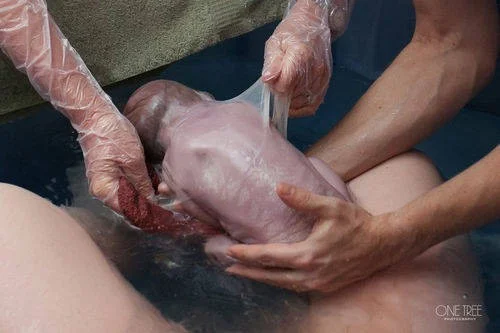

Asphyxia and Drowning
Choking
Choking occurs due to the blockage of internal air passages, usually by foreign material such as inhaled vomit, blood, food particles (especially fruit seeds in children), or the tongue in comatose patients.
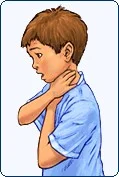
Postmortem Findings:
- Petechiae may be present if significant retching has occurred.
- There may be injuries to the buccal mucosa related to resuscitation.
- The right ventricle of the heart is dilated, and the lungs are hyperinflated and possibly edematous.

Traumatic Asphyxia
Traumatic asphyxia is a mechanical anoxic death due to mechanical pressure by a heavy object on the chest, with or without abdominal compression, leading to the prevention of respiratory movements.
Postmortem Findings:
- Severe congestion and cyanosis above the level of compression, frequently with a sharp line of demarcation.
- Prominent Petechial hemorrhages.
- There may be associated sternal, or spinal, fractures and interstitial emphysema.

Overlying
Overlying, also called compression suffocation, results when a mother or another person sharing a bed with an infant compresses the infant during sleep.
Cause of Death:
- Death occurs due to compression of the chest, and these deaths are accidental in nature.

Burking
Burking is a form of mechanical asphyxia where death is caused by a combination of smothering and traumatic asphyxia. The victim is put to the ground, and the assailant sits on the chest and closes the mouth.
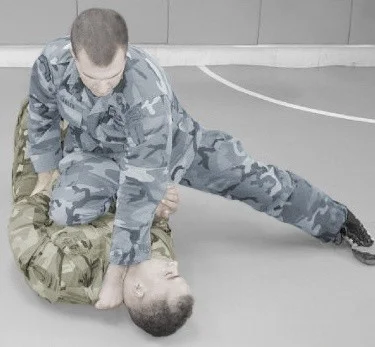
Drowning
▪Introduction of drowning ▪Diatoms ▪Physiopathology ▪Autopsy finding ▪Investigation ▪Conclusion ▪References
Introduction
Drowning is a process resulting in primary respiratory impairment from submersion in a liquid medium. Drowning almost always occurs as a result of an accident.

Definition and Diagnosis
-
Drowning is a form of asphyxia due to the aspiration of fluid into the air passage, caused by submersion in fluid. Complete submersion is not necessary; submersion of the nose and mouth alone for a sufficient period can cause death from drowning.
-
The diagnosis of drowning is the most difficult in forensic medicine. The external examination, autopsy findings, and laboratory investigations in most cases are not specific.
Diatoms
Diatoms are unicellular microorganisms which are commonly found in almost all water bodies. Their silica wall plays important tool in forensic diatomology. Diatom test has been widely applied to detect post mortem or antemortem drowning and comparing the diatoms found in biological sample with those found in water sample confirms that death took place, probably in same water medium. However, in skeletonized stage or dismemberment of body parts at different location, diatom of specific kind helps to link the place of drowning.

Physiopathology
Phases of Drowning:
- Hold breath phase followed by involuntary inspiration and gasping, leading to loss of consciousness.
- Death due to cerebral hypoxia, leading to irreversible brain damage.
Effects of Water Type:
-
Fresh water is hypotonic and hyponatremic relative to blood. After inhalation, the movement of water from the alveoli into the blood causes haemodilution, hypervolemia, hyponatremia, hyperkalemia, and hemolysis.
-
Sea water is hypertonic relative to blood. The water movement goes from blood into alveoli, and the electrolytes (sodium, chloride, magnesium) move from alveoli to the blood, resulting in haemoconcentration and hypovolemia.
Other Physiopathological Effects:
-
A vagal reflex may be induced by inhalation of water.
-
Stimulation of nerve endings at the skin, the mucosa of the eardrum, the pharynx, and larynx by cold water can lead to cardiac reflex arrest.
-
A small amount of cold water may induce a vagal reflex and cardiac arrest.
Autopsy Findings
-
Lung weight is higher in drowning cases, but normal weight is possible in cases where cardiac arrest or vaso-vagal reflex occurs.
-
Water inhalation causes the lungs to be over-inflated, filling the thoracic cavity, generally referred to as emphysema aquosum.
-
A large amount of froth is present around the nostrils, mouth, upper and lower airways in freshly drowned bodies.
-
The majority of autopsy findings are related to asphyxia.
External Changes:
-
The skin becomes wrinkled, pale, and sodden like “washer woman’s skin”.
-
Changes appear at the fingertips, palms, backs of the hands, and later, the soles. The next step is the detachment of the thick keratin of hands and feet, which pulls off in a “glove and stocking fashion”. Nails and hair become loosened after a few days.
-
Other signs of immersion include cutis anserina and post-mortem distribution of hypostasis.
Investigations
Histology:
-
Lung examinations can show over-distension of the alveoli.
-
Several staining techniques must be performed, such as staining for elastic fibers (orcein) and reticulin fibers.
-
Examination of other organs (brain, heart, liver) shows non-specific histological changes indicative of hypoxia, such as acute congestion and swelling of the capillary endothelia.
Biological Tests:
-
The chemical changes in plasma after drowning are based on the fluid and electrolyte shifts after the penetration of either sea or fresh water into the alveoli and bloodstream.
-
Measurement of the specific gravity of blood, concentration of sodium, chloride, and potassium.
Diatom Test:
- Diatoms can be considered particles present in the submersion water that are inhaled during drowning and, once in the bloodstream, reach closed organs. Under strict extraction and identification conditions, these particles are good markers of drowning.
Conclusion
The diagnosis of drowning may be achieved after considering all forensic investigations performed in such cases, including external examination, autopsy findings, histological and toxicological analysis, blood strontium determination, biochemical analysis, and diatom test. The diatom test is still considered controversial by the literature, but qualitative and quantitative criteria can exclude false-positive results, making it particularly useful in cases of putrefied bodies where other investigations have failed.